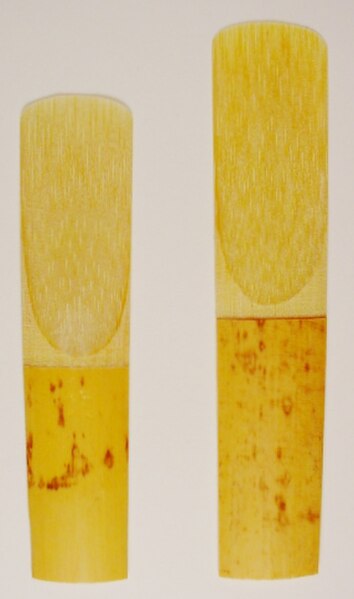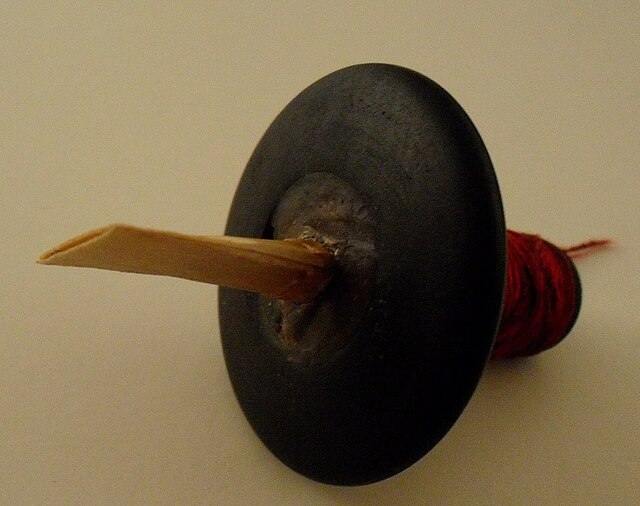The mouthpiece of a woodwind instrument is that part of the instrument which is placed partly in the player's mouth. Single-reed instruments, capped double-reed instruments, and fipple flutes have mouthpieces while exposed double-reed instruments and open flutes do not. The characteristics of a mouthpiece and reed can play a significant role on the sound of the instrument.
Soprano saxophone mouthpiece
A clarinet mouthpiece set up to play with the reed held in place with the ligature
The interior chamber of a clarinet mouthpiece showing the straight side walls
Pirouette from a ciaramella
A single-reed instrument is a woodwind instrument that uses only one reed to produce sound. The very earliest single-reed instruments were documented in ancient Egypt, as well as the Middle East, Greece, and the Roman Empire. The earliest types of single-reed instruments used idioglottal reeds, where the vibrating reed is a tongue cut and shaped on the tube of cane. Much later, single-reed instruments started using heteroglottal reeds, where a reed is cut and separated from the tube of cane and attached to a mouthpiece of some sort. By contrast, in a double reed instrument, there is no mouthpiece; the two parts of the reed vibrate against one another. Reeds are traditionally made of cane and produce sound when air is blown across or through them. The type of instruments that use a single reed are clarinets and saxophone. The timbre of a single and double reed instrument is related to the harmonic series caused by the shape of the corpus. E.g. the clarinet is only including the odd harmonics due to air column modes canceling out the even harmonics. This may be compared to the timbre of a square wave.

The reeds of alto (left) and tenor saxophones. They are of comparable dimensions to alto and bass clarinet reeds, respectively.
Drawings of idioglot reeds: tubular single reeds in which the reed is still part of the reed stem. Reeds can be split from middle upward (kataglott, the reed hangs down) and from top downward (anaglott, the reed stands up). These particular reeds are drawn from those used in an from an arghul. Also used in bagpipes, and reedpipes or clarinet family: bülban, diplica, dili tuiduk, dozaleh, early chalumeaus, cifte, launeddas, mijwiz, pilili, reclam de xeremies,
The ligature, mouthpiece, and reed of a clarinet. These three components are present in many modern European Classical single-reed instruments and tend to be aesthetically and mechanically similar.
Chalumeau







